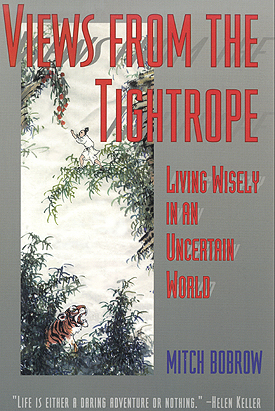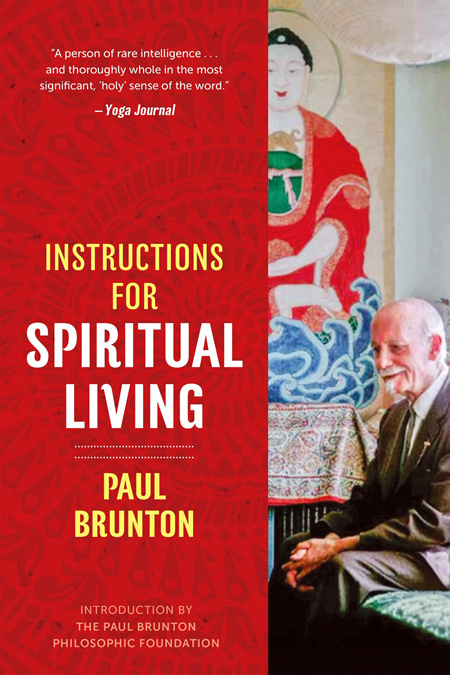This Hungry Spirit
Your need for basic goodness By C. Clinton Sidle

Retail/cover price: $15.95
Our price : $11.16
(You save $4.79!)
About this book:
This Hungry Spirit
Your need for basic goodness
by C. Clinton Sidle
"Profound and practical." —Daniel Goleman.
A roadmap to perspectives and behaviors that make successful leaders.
Subjects: Self-Development, Happiness, Success, Business
Autographed copies available!
Click here.
6 x 9, paperback, French flaps
176 pages
A green publication
ISBN 10: 1-936012-45-6
ISBN 13: 978-1-936012-45-9
Book Details
“In This Hungry Spirit, Clint Sidle offers profound and practical heart advice of great use for anyone hankering for a more fulfilling life.” —Daniel Goleman, author, Emotional Intelligence
Basic goodness is the treasure of your existence. It connects you with your world in ways that wake you up and feel good. To create a new reality, says leadership guru Clint Sidle — whether at work, in relationships, or in your spiritual life — you simply must find and come from this relaxed, stronger place.
Basic goodness is the one thing that leads to
- Confidence
- Happiness
- Success
- Work that you love
- Leading well
- Making a difference
- Connecting genuinely with others
- Satisfying relationships (including romantic)
- Letting go of old issues
- Creating new possibilities
- Becoming your best possible self
- A meaningful, considered life
Basic goodness is the source of joy, interest, gratitude, enthusiasm — all that makes you feel best about yourself and others. It awakens a trust in yourself that has magic in it. It inspires choices that serve the best you possible. When you come from basic goodness, the world responds in kind. Not knowing it’s in you is like mistaking a precious gem in your pocket for an ordinary stone.
Basic goodness opens you, broadens your view, connects you with others, and engages your natural talents with the world’s needs.
This Hungry Spirit is about how you can find it, nurture it, and watch it nourish every aspect of your life.
"I know there is a hunger in you," Sidle begins, "longing to be filled. Just stop and look for amoment, and you will find it. You feel it don’t you? You may be successful, yet still you strive. You may be wealthy, yet still you seek gain. You may be loved, yet you still wander. Where does this discontent begin? There is always something missing. What do you so long for?”
Becoming an effective human being, Sidle teaches, is less about mastering certain skills than about fostering a certain attitude in yourself and others. To show how to live that attitude in a real, practical, and convincing way, he skillfully connects themes not brought together in books focusing on happiness or success or leadership alone.
"Those who lead others in quests toward self-improvement and motivation will find This Hungry Spirit’s action driven but relatable narrative beneficial in inspiring action and confidence in others." —D.K.
Acknowledgments
Introduction: This Hungry Spirit
Part One: The Lesser and Greater Spirit
1 The Grip of the Lesser Spirit: How You Limit Yourself
Your hungry spirit . . . Is guided by your mental models . . . Those models are shaped by your mental chatter . . . Most of that chatter is about you . . . But the models are not real . . . And they can cause problems.
They are self-limiting
They cause stress
They make problems in relationships
They separate us from ourselves
2 The Freedom of the Greater Spirit: You Can Choose another Way
You can change your mental models . . . Where you suffer often gives the clue . . . Yet choosing is still difficult . . . You first must find your basic goodness . . . What is this basic goodness, really? . . . When you find it, you find not only happiness but also success
Part Two: Discovering the Basic Goodness of the Greater Spirit: New Mental Models for Living
Prefatory
3 Wake Up
Make reflection a habit . . . Seek feedback . . . Meditate for insight . . . Exercise regularly . . . Keep a journal . . . Cultivate mindfulness
4 Follow Your Bliss
Play to your strengths . . . Serve your purpose . . . Craft the work you do to you until you find work you love (or come close) . . . Learn to learn . . . When in doubt, return to your purpose
5 Treat People as People
Honor the “Thou” . . . Use dialogue . . . Embrace the beloved . . . Develop your support team . . . Forgive with courage
6 Work the Law of Cause and Effect
Magnetize your intention . . . Appreciate your world . . . Turn problems into opportunities . . . Behave into new ways of being . . . Give generously . . . Follow the signs
7 Be Heroic
Reap the lessons of adversity . . . Turn fear into an ally . . . Push your edge . . . Don’t try to escape
8 Enjoy the Ride
Appendix: Identify your strengths—The Leadership Wheel Assessment
Bibliography
Index
Table of Exercises
Chapter 1
Exercise 1: Identifying your mental models
Exercise 2: Watching your mental chatter
Exercise 3: How much do you doubt?
Exercise 4: What is your wound? (The Lifeline Activity)
Exercise 5: Loosening your mental models
Exercise 6: Assessing your work
Exercise 7: What are your defenses?
Exercise 8: Looking at a difficult relationship
Exercise 9: What makes you happiest?
Exercise 10: Who am I?
Chapter 2
Exercise 11: Working with your defenses
Exercise 12: Find your repeated patterns
Exercise 13: What opens and closes you?
Exercise 14: Moving to an other-centered world
Exercise 15: Tasting basic goodness
Chapter 3
Exercise 16: Creating reflective space
Exercise 17: Feedback bombardment
Exercise 18: Meditation
Exercise 19: Journaling
Exercise 20: Walking with mindfulness
Chapter 4
Exercise 21: Identify your talents and strengths
Exercise 22: Discovering your purpose
Exercise 23: Rejuvenating your work
Exercise 24: Your ideal job
Chapter 5
Exercise 25: How you treat others
Exercise 26: Listening
Exercise 27: Reframing a difficult relationship
Exercise 28: Working with regret
Exercise 29: Using dialogue
Exercise 30: Re-inventing your relationship
Exercise 31: Develop your circle
Exercise 32: Forgiving
Chapter 6
Exercise 33: Appreciation activities
Exercise 34: From Victim to Victor
Exercise 35: Happiness triggers
Exercise 36: Tracking synchronicity
Chapter 7
Exercise 37: The Heroic Journey
Exercise 38: Turn fears into breakthroughs
Exercise 39: Stretch yourself
“In This Hungry Spirit, Clint Sidle offers profound and practical heart advice of great use for anyone hankering for a more fulfilling life.” —Daniel Goleman, author, Emotional Intelligence
“This Hungry Spirit is inspiring and original — a creative and deeply satisfying look into what being happy and effective really involves. Blending fresh perspectives on life, leadership, and spirituality with personal stories and practical hands-on tools, Clint helps each of us find our unique path to a fulfilling and meaningful life.” —Annie McKee, co-author, Primal Leadership and Resonant Leadership; Founder, Teleos Leadership Institute
“Clint Sidle has written a superb and insightful work designed to guide those seeking to be better leaders and better people. The best leaders in today’s hectic world take time to understand themselves and they seek to fulfill themselves as well. Clint provides the clearest and deepest manner to achieve these goals that I have read.” —Anthony C. Zinni, US Marine Corps retired four-star general, former CENTCOM chairman, and Middle East negotiator for President Bill Clinton
“Leadership success and living with real purpose both start with self-awareness. Through compelling stories and practical, engaging exercises, Clint Sidle challenges and inspires us to know ourselves, find our passions, and act on them.” —John Ryan, President and CEO, Center for Creative Leadership; Admiral, US Navy (ret); Commandant, US Naval Academy (ret); former Chancellor of the State University of New York
Click here to see a PDF of the Table of Contents and Introduction of This Hungy Spirit by C. Clinton Sidle.

When he wrote this book, C. CLINTON SIDLE was directing the prestigious Roy H. Park Leadership Fellows Program in the Johnson School of Management at Cornell University. He is still a top consultant in strategic change, leadership, executive coaching, and developing human potential. His leadership programs at Cornell and elsewhere earned national recognition. He has worked with Fortune 500 companies, state and local educational systems, and some of the nation’s leading universities and non-profit organizations.
Clint is also the author of two earlier books: High Impact Tools and Techniques for Strategic Planning (McGraw Hill, 1998) in collaboration with Rod Napier and Pat Sanaghan, and The Leadership Wheel: Five Steps to Achieving Personal and Organizational Greatness (Palgrave Macmillan (2005).
He lives in Ithaca, NY, and may be contacted at ccs7@cornell.edu or through his website at http://www.clintsidle.org
Book Details
“In This Hungry Spirit, Clint Sidle offers profound and practical heart advice of great use for anyone hankering for a more fulfilling life.” —Daniel Goleman, author, Emotional Intelligence
Basic goodness is the treasure of your existence. It connects you with your world in ways that wake you up and feel good. To create a new reality, says leadership guru Clint Sidle — whether at work, in relationships, or in your spiritual life — you simply must find and come from this relaxed, stronger place.
Basic goodness is the one thing that leads to
- Confidence
- Happiness
- Success
- Work that you love
- Leading well
- Making a difference
- Connecting genuinely with others
- Satisfying relationships (including romantic)
- Letting go of old issues
- Creating new possibilities
- Becoming your best possible self
- A meaningful, considered life
Basic goodness is the source of joy, interest, gratitude, enthusiasm — all that makes you feel best about yourself and others. It awakens a trust in yourself that has magic in it. It inspires choices that serve the best you possible. When you come from basic goodness, the world responds in kind. Not knowing it’s in you is like mistaking a precious gem in your pocket for an ordinary stone.
Basic goodness opens you, broadens your view, connects you with others, and engages your natural talents with the world’s needs.
This Hungry Spirit is about how you can find it, nurture it, and watch it nourish every aspect of your life.
"I know there is a hunger in you," Sidle begins, "longing to be filled. Just stop and look for amoment, and you will find it. You feel it don’t you? You may be successful, yet still you strive. You may be wealthy, yet still you seek gain. You may be loved, yet you still wander. Where does this discontent begin? There is always something missing. What do you so long for?”
Becoming an effective human being, Sidle teaches, is less about mastering certain skills than about fostering a certain attitude in yourself and others. To show how to live that attitude in a real, practical, and convincing way, he skillfully connects themes not brought together in books focusing on happiness or success or leadership alone.
"Those who lead others in quests toward self-improvement and motivation will find This Hungry Spirit’s action driven but relatable narrative beneficial in inspiring action and confidence in others." —D.K.
Acknowledgments
Introduction: This Hungry Spirit
Part One: The Lesser and Greater Spirit
1 The Grip of the Lesser Spirit: How You Limit Yourself
Your hungry spirit . . . Is guided by your mental models . . . Those models are shaped by your mental chatter . . . Most of that chatter is about you . . . But the models are not real . . . And they can cause problems.
They are self-limiting
They cause stress
They make problems in relationships
They separate us from ourselves
2 The Freedom of the Greater Spirit: You Can Choose another Way
You can change your mental models . . . Where you suffer often gives the clue . . . Yet choosing is still difficult . . . You first must find your basic goodness . . . What is this basic goodness, really? . . . When you find it, you find not only happiness but also success
Part Two: Discovering the Basic Goodness of the Greater Spirit: New Mental Models for Living
Prefatory
3 Wake Up
Make reflection a habit . . . Seek feedback . . . Meditate for insight . . . Exercise regularly . . . Keep a journal . . . Cultivate mindfulness
4 Follow Your Bliss
Play to your strengths . . . Serve your purpose . . . Craft the work you do to you until you find work you love (or come close) . . . Learn to learn . . . When in doubt, return to your purpose
5 Treat People as People
Honor the “Thou” . . . Use dialogue . . . Embrace the beloved . . . Develop your support team . . . Forgive with courage
6 Work the Law of Cause and Effect
Magnetize your intention . . . Appreciate your world . . . Turn problems into opportunities . . . Behave into new ways of being . . . Give generously . . . Follow the signs
7 Be Heroic
Reap the lessons of adversity . . . Turn fear into an ally . . . Push your edge . . . Don’t try to escape
8 Enjoy the Ride
Appendix: Identify your strengths—The Leadership Wheel Assessment
Bibliography
Index
Table of Exercises
Chapter 1
Exercise 1: Identifying your mental models
Exercise 2: Watching your mental chatter
Exercise 3: How much do you doubt?
Exercise 4: What is your wound? (The Lifeline Activity)
Exercise 5: Loosening your mental models
Exercise 6: Assessing your work
Exercise 7: What are your defenses?
Exercise 8: Looking at a difficult relationship
Exercise 9: What makes you happiest?
Exercise 10: Who am I?
Chapter 2
Exercise 11: Working with your defenses
Exercise 12: Find your repeated patterns
Exercise 13: What opens and closes you?
Exercise 14: Moving to an other-centered world
Exercise 15: Tasting basic goodness
Chapter 3
Exercise 16: Creating reflective space
Exercise 17: Feedback bombardment
Exercise 18: Meditation
Exercise 19: Journaling
Exercise 20: Walking with mindfulness
Chapter 4
Exercise 21: Identify your talents and strengths
Exercise 22: Discovering your purpose
Exercise 23: Rejuvenating your work
Exercise 24: Your ideal job
Chapter 5
Exercise 25: How you treat others
Exercise 26: Listening
Exercise 27: Reframing a difficult relationship
Exercise 28: Working with regret
Exercise 29: Using dialogue
Exercise 30: Re-inventing your relationship
Exercise 31: Develop your circle
Exercise 32: Forgiving
Chapter 6
Exercise 33: Appreciation activities
Exercise 34: From Victim to Victor
Exercise 35: Happiness triggers
Exercise 36: Tracking synchronicity
Chapter 7
Exercise 37: The Heroic Journey
Exercise 38: Turn fears into breakthroughs
Exercise 39: Stretch yourself
“In This Hungry Spirit, Clint Sidle offers profound and practical heart advice of great use for anyone hankering for a more fulfilling life.” —Daniel Goleman, author, Emotional Intelligence
“This Hungry Spirit is inspiring and original — a creative and deeply satisfying look into what being happy and effective really involves. Blending fresh perspectives on life, leadership, and spirituality with personal stories and practical hands-on tools, Clint helps each of us find our unique path to a fulfilling and meaningful life.” —Annie McKee, co-author, Primal Leadership and Resonant Leadership; Founder, Teleos Leadership Institute
“Clint Sidle has written a superb and insightful work designed to guide those seeking to be better leaders and better people. The best leaders in today’s hectic world take time to understand themselves and they seek to fulfill themselves as well. Clint provides the clearest and deepest manner to achieve these goals that I have read.” —Anthony C. Zinni, US Marine Corps retired four-star general, former CENTCOM chairman, and Middle East negotiator for President Bill Clinton
“Leadership success and living with real purpose both start with self-awareness. Through compelling stories and practical, engaging exercises, Clint Sidle challenges and inspires us to know ourselves, find our passions, and act on them.” —John Ryan, President and CEO, Center for Creative Leadership; Admiral, US Navy (ret); Commandant, US Naval Academy (ret); former Chancellor of the State University of New York
Click here to see a PDF of the Table of Contents and Introduction of This Hungy Spirit by C. Clinton Sidle.
About C. Clinton Sidle

When he wrote this book, C. CLINTON SIDLE was directing the prestigious Roy H. Park Leadership Fellows Program in the Johnson School of Management at Cornell University. He is still a top consultant in strategic change, leadership, executive coaching, and developing human potential. His leadership programs at Cornell and elsewhere earned national recognition. He has worked with Fortune 500 companies, state and local educational systems, and some of the nation’s leading universities and non-profit organizations.
Clint is also the author of two earlier books: High Impact Tools and Techniques for Strategic Planning (McGraw Hill, 1998) in collaboration with Rod Napier and Pat Sanaghan, and The Leadership Wheel: Five Steps to Achieving Personal and Organizational Greatness (Palgrave Macmillan (2005).
He lives in Ithaca, NY, and may be contacted at ccs7@cornell.edu or through his website at http://www.clintsidle.org









.jpg)





.jpg)
